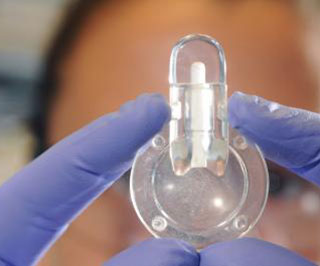
Image credit: Courtesy Gary Meek
From Addis Ababa to Atlanta, efforts are under way to bring diagnostic tests closer to the patient. It’s an objective not just in developing countries, but in the U.S. retail pharmacy industry as well. An afternoon symposium on July 29 at AACC’s Annual Meeting & Clinical Lab Expo, “Convergence of Global Point-of-Care Diagnostic Needs” (34212), will discuss how these two markets on point-of-care testing are coming together.
“Through our work in diagnostics and global health, we have observed the convergence of several trends in the market,” session moderator Richard Thayer, managing partner with Halteres Associates, LLC, a California-based bioscience consultancy firm, told CLN Stat.
These include:
- Advancements in diagnostic, medical, and healthcare-related technologies;
- Increasing expectations of patients fueled by Internet and social media communications;
- The evolving role of nonprofits and other funders to support new development and capacity-building programs;
- Increased alignment of governments and insurers to improve delivery of healthcare services while minimizing costs; and
- The availability of new business models supporting expansion of decentralized testing.
“Understanding these points of convergence is making it possible to design next-generation diagnostic programs with the needs of many different global players in mind,” Thayer said.
Several presenters from diverse backgrounds will be joining Thayer to discuss this fascinating topic: James Gallarda, PhD, senior program officer for diagnostics at the Bill & Melinda Gates Foundation; Wallace White, BS, director of mechanical engineering at Stratos Product Development; and Casey Kozlowski, MBA, director of diagnostic testing at Walgreens.
Halteres, Stratos, and the Bill & Melinda Gates Foundation have worked together on several projects addressing next-generation point-of-care testing (POCT) instrument systems. Part of this work involved creating new business models to support sustainability of diagnostic programs in settings with limited resources, Thayer said.
“Through the involvement of Walgreens and others, we believe it is possible to broaden the traditional view of resource-limited settings to include many of the decentralized markets in the U.S.,” he said. This includes retail pharmacy clinics, public health clinics, and urgent care centers. “We have come together to better understand the opportunities across this broader group of healthcare settings.”
Anyone who is involved in the generation and delivery of diagnostic and healthcare-related information to inform real-time treatment decisions should attend this session, Thayer advised.
A POCT coordinator, for example, “will better understand the coming generation of diagnostic technologies, including testing systems and health information technology tools, that are being developed to improve real-time availability of diagnostic data during the patient encounter,” he said.
The hope is that attendees will gain perspective on the challenges developers and providers face in delivering healthcare in many settings around the world, and the urgent need for new approaches in information and communications technologies.
Register online to attend this session about the convergence of POCT efforts around the globe.